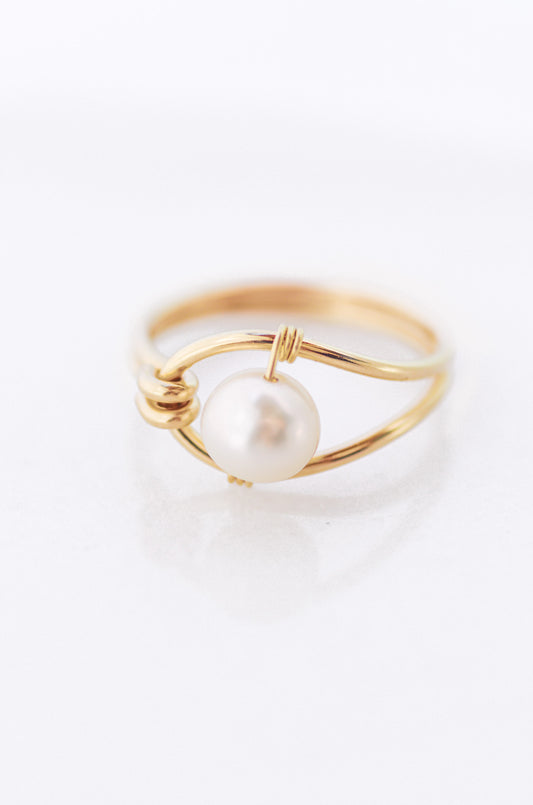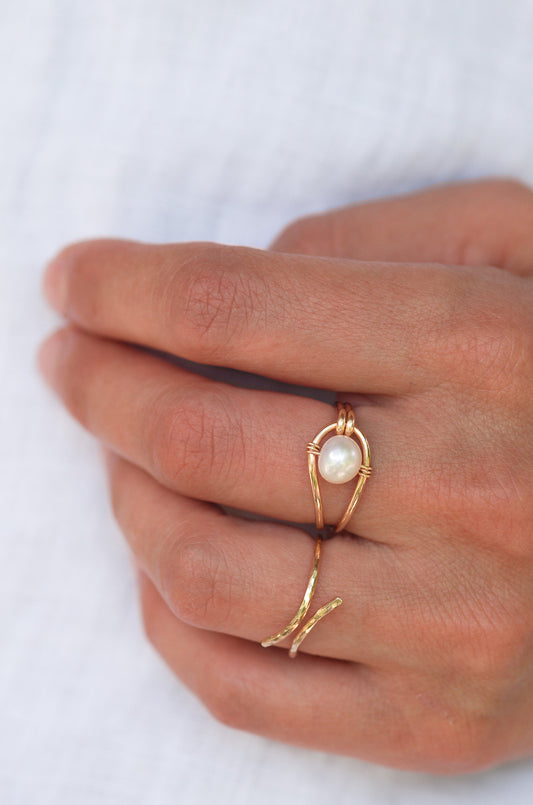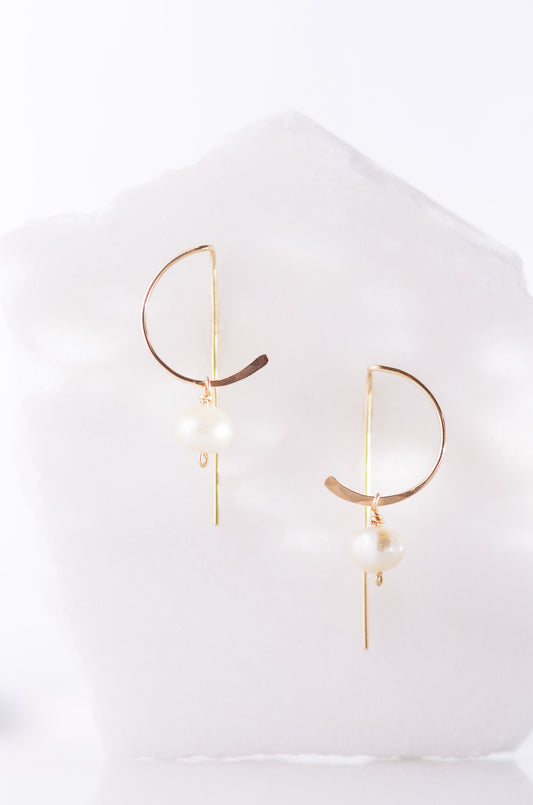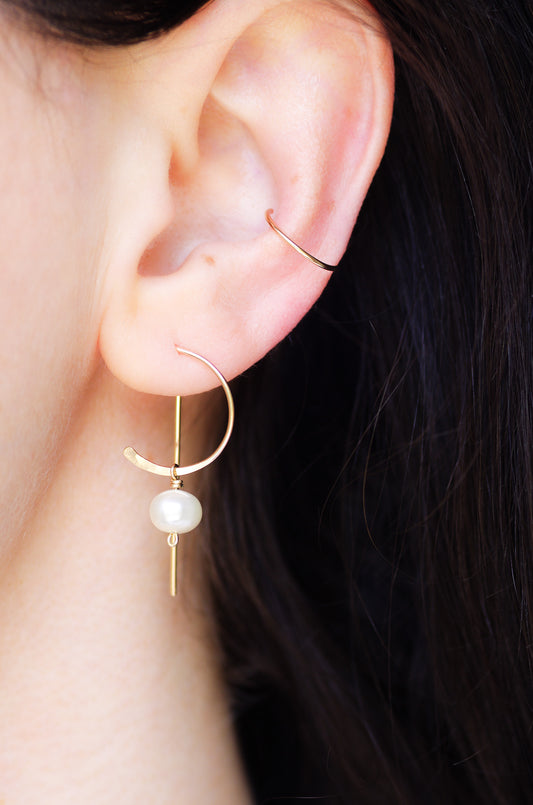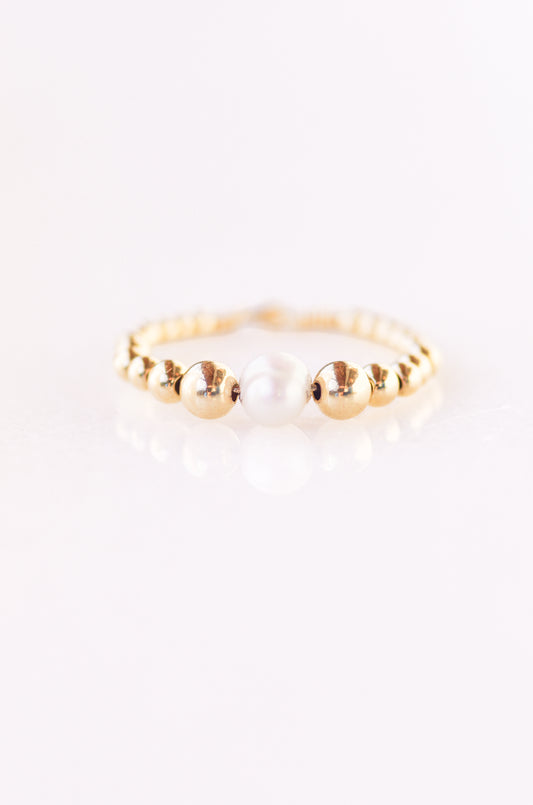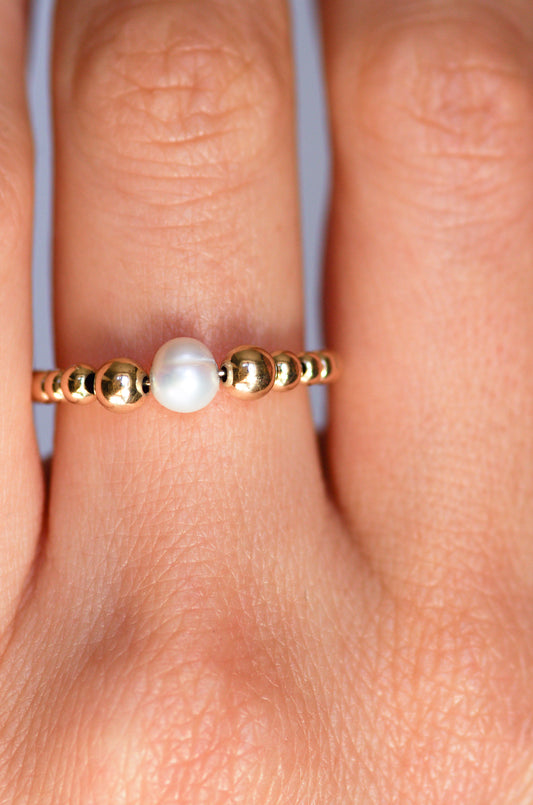Are Pearls Sustainable?
Share
Pearls and Greenwashing: A Dirty Secret

Find out why we use only second hand, repurposed pearls for Rays & Riches jewelry
Dearest reader, thank you for your dedication to living a more sustainable life. Your efforts, even in seemingly small decisions like your choice of jewelry, do make a difference and future generations will thank you for it.
It's perfectly reasonable to believe that jewelry brands that market themselves as sustainable offer genuinely sustainable jewelry- with all of the components of their jewerly being sustainable & ethically sourced.
But the reality may not align with what we assume. It's not your fault; greenwashing is everywhere and nobody bothered to tell you the truth until now.
It is crucial to understand the origins of your pearls to ensure they align with your standards of sustainability, so you can make informed decisions.
Are Pearls Really Sustainable?

The perception is that they require clean water and a thriving ecosystem to grow.
The truth is that it is not in the interest of brands who market themselves as sustainable to unveil the reality about their pearls.
Once again it is up to us as conscious consumer to dig a little deeper.
How Can Real Pearls Be So Affordable?
To understand this, we need to look at the practices employed in pearl farming.
Freshwater pearls - not so fresh after all

Most jewelry brands use affordable freshwater pearls which yield higher results. They are often marketed as "organic" and "all-natural," emphasizing their natural origin.
But the reality is more intricate, and the production of cultured freshwater pearls, which dominate the market, pose ecological challenges and environmental risks.

1.Cultivation in Manmade Ponds:
Most pearls are cultivated in manmade ponds that replace former rice fields. These ponds are enriched with animal manure and chemical fertilizers to stimulate the growth of algae, a vital food source for pearl-producing mussels. However, these practices can lead to nutrient depletion in the soil and pollution.
2.Environmental Impact Beyond Farming:
The environmental impact of pearl production goes beyond farming. Chemical treatments, including bleaching, are commonly used to enhance pearl appearance and marketability. These practices not only harm the environment but also the workers responsible for these treatments.
In order to maintain low prices, exploitation of workers is a common practice in the pearl industry, as it is in other industries such as fast fashion.

Saltwater Pearls: The Pristine Waters Illusion

Saltwater pearls always come at a much higher price-point than freshwater pearls, even low quality saltwater pearls usually cost at least 20 times as much.
When it comes to sustainability, saltwater pearls are often considered a better choice than freshwater pearls. However, it's important to know the farming conditions under which they were produced.
These pearls require pearl farmers to maintain a fairly healthy environment for successful harvests. However, not all farmers prioritize sustainable practices.
Growing pearls is a labor intensive practice and many resort to methods that make their life easier, such as using high-powered hoses, through which unfortunately parasites get introduced into the delicate marine ecosystem. Or using nuclei from threatened shell species. Chemical products are also commonly used, leading to pollution and generating waste.
While there are farms that prioritize maintaining pristine waters and thriving ecosystems, producing high-quality pearls as a result, it's important to acknowledge that pearls from these sustainable pearl farms typically come at an even higher price point.
Sustainable Alternatives and Moving Forward:

Our goal with this article is to enable you to live in harmony with your values. By sharing insights and information, we hope to empower you to make informed choices and explore alternative paths that benefit our planet and all living things.
One such alternative is opting for second-hand, pre-loved pearls like the ones available at Rays&Riches.
By repurposing forgotten treasures, we not only avoid the environmental impact associated with pearl farming but also give them a second chance to be cherished once again.
If your values inspire you to extend compassion towards all living beings, including mussels and oysters, choosing second-hand, pre-loved pearls not only embraces sustainability but also pays homage to the mussels and oysters that sacrificed their lives in the past.
Summary:
The sustainability claims associated with pearls can be misleading, given the complex ecological issues surrounding their production. As conscious consumers, we must be aware of these nuances and consider the environmental implications before making a purchase.
As consumers, we have the power to drive change in the pearl industry, it is our purchasing decisions that shape the market.
By consciously refraining from buying conventionally farmed pearls without traceability or independent certifications, we send a strong message.
Engaging with jewelry brands, asking about pearl origins, advocating for traceability and transparency, is another great way to drive change.

At Rays & Riches, we recognize the importance of repurposing and embracing conscious consumption. By choosing our jewelry, you can be confident in supporting sustainable practices and embracing the beauty of pearls with a mindful approach.
Let's take our first step together in a brand new direction towards a better world.

